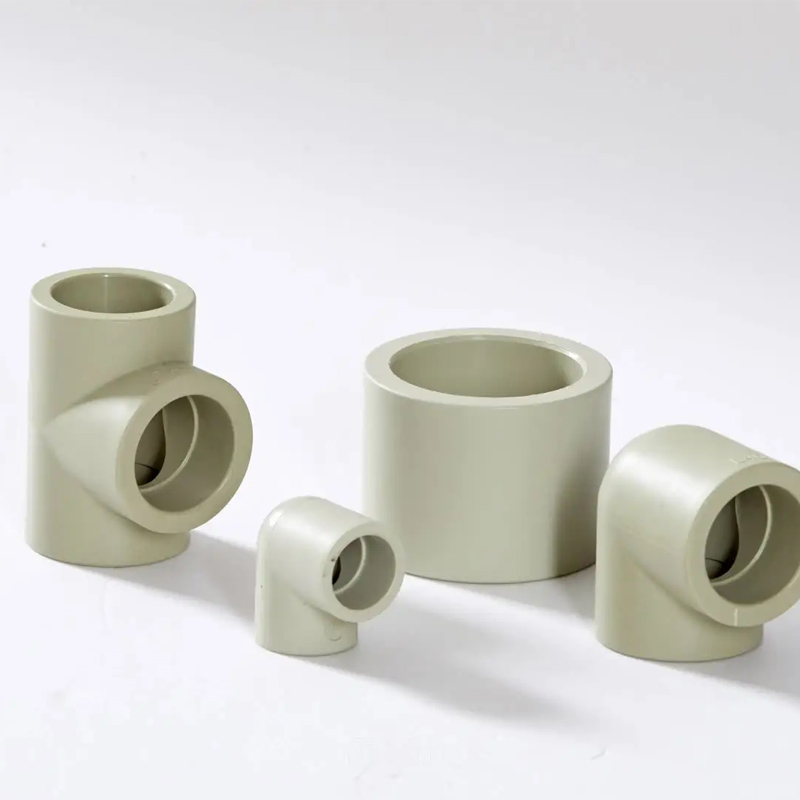Oct . 17, 2024 13:02 Back to list
Wholesale Connections Between PVC and HDPE Pipes for Efficient Plumbing Solutions
Understanding the Wholesale PVC to HDPE Pipe Connection
In the realm of plumbing and construction, proper material selection is crucial for ensuring the longevity and efficiency of any installation. One common dilemma faced by contractors and engineers is the connection between different types of pipes, especially when transitioning from PVC (Polyvinyl Chloride) pipes to HDPE (High-Density Polyethylene) pipes. This article will delve into the wholesale options available for these connections, highlighting the benefits, challenges, and best practices when making this transition.
What Are PVC and HDPE Pipes?
PVC pipes are widely utilized in the construction and plumbing industries due to their lightweight nature, durability, and resistance to corrosion. They are particularly effective for water supply and drainage systems. On the other hand, HDPE pipes are known for their flexibility and strength. They are often used in applications requiring high pressure, such as sewage and industrial water management. While both materials have unique benefits, the need to connect these two types of pipes can arise in various scenarios, such as system upgrades or repairs.
Importance of Proper Connections
When connecting PVC to HDPE pipes, ensuring a secure and leak-free connection is paramount. An inadequate joint can lead to water loss, system inefficiency, and in some cases, structural damage. Therefore, understanding the correct methods and materials for these connections is essential for contractors and wholesale suppliers alike.
Types of Connections
There are several ways to connect PVC and HDPE pipes, each with its advantages and disadvantages
1. Mechanical Fittings These fittings are widely available in the wholesale market and provide a straightforward solution for joining PVC and HDPE pipes. Mechanical connectors typically consist of a coupling that grips both pipe ends, creating a seal. They are easy to install and allow for disassembly if needed.
2. Transition Fittings Transition fittings are specifically designed to connect dissimilar materials. These fittings typically have a bell-shaped end that fits over the PVC pipe and a series of grooves or teeth that latch onto the HDPE pipe. They ensure a secure connection and minimize the risk of leakage.
3. Adhesives and Sealants While not as common for HDPE connections, special adhesives or sealants can be used in some cases. It is essential to ensure that the selected adhesive is compatible with both materials. However, this method may not provide the same level of security as mechanical fittings.
Wholesale Considerations
wholesale pvc to hdpe pipe connection

When sourcing materials for connecting PVC to HDPE pipes, contractors should consider the following factors to ensure they choose the right products
- Quality of Materials Always opt for high-quality fittings and pipes from reputable suppliers
. Inferior products may lead to premature failure and costly repairs.- Compatibility Ensure that the fittings are compatible with both PVC and HDPE. Check specifications and consult manufacturer guidelines if necessary.
- Supplier Reliability Choose wholesale suppliers known for their reliable delivery and excellent customer service. A good supplier will provide technical support and guidance on installation practices.
- Cost Efficiency While it may be tempting to go for the cheapest options, consider the long-term value of investing in high-quality materials that will reduce the need for future repairs and replacements.
Best Practices for Installation
1. Preparation Before starting installation, clean the ends of both pipes to remove any dirt, debris, or contaminants. This step ensures a better bond.
2. Follow Manufacturer Instructions Always adhere to the installation guidelines provided by the manufacturer for both the pipes and the fittings.
3. Testing Once the connection is made, conduct pressure tests to check for leaks. This proactive step can save time and resources by identifying issues before they escalate.
4. Regular Maintenance Encourage routine inspection and maintenance of the pipe connections to extend the lifespan of the installation.
Conclusion
Establishing a reliable connection between PVC and HDPE pipes is essential in various plumbing and construction projects. By understanding the available wholesale options, selecting the right materials, and following best practices for installation, contractors can ensure efficient and secure connections that stand the test of time. Whether it's a small renovation or a large-scale construction project, having solid knowledge about the PVC to HDPE pipe connection can significantly enhance the overall success of the endeavor.
-
High-Quality PVC Borehole Pipes Durable & Versatile Pipe Solutions
NewsJul.08,2025
-
High-Quality PVC Perforated Pipes for Efficient Drainage Leading Manufacturers & Factories
NewsJul.08,2025
-
High-Quality PVC Borehole Pipes Durable Pipe Solutions by Leading Manufacturer
NewsJul.08,2025
-
High-Quality PVC Borehole Pipes Reliable PVC Pipe Manufacturer Solutions
NewsJul.07,2025
-
High-Quality UPVC Drain Pipes Durable HDPE & Drain Pipe Solutions
NewsJul.07,2025
-
High-Quality Conduit Pipes & HDPE Conduit Fittings Manufacturer Reliable Factory Supply
NewsJul.06,2025

